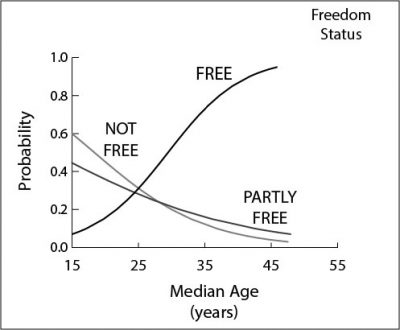 View the article, Will Tunisia’s Democracy Survive? A View from Political Demography, originally published on The New Security Beat.
View the article, Will Tunisia’s Democracy Survive? A View from Political Demography, originally published on The New Security Beat.
What chance does Tunisia’s democracy have of withstanding the formidable challenges that periodically arise? Surprisingly, a good chance, according to recent research in political demography, a field that is focused on a limited yet robust set of relationships between demography and political outcomes.
Read the rest of “Will Tunisia’s Democracy Survive?” A View from Political Demography” here …

 View “
View “
 Read “
Read “